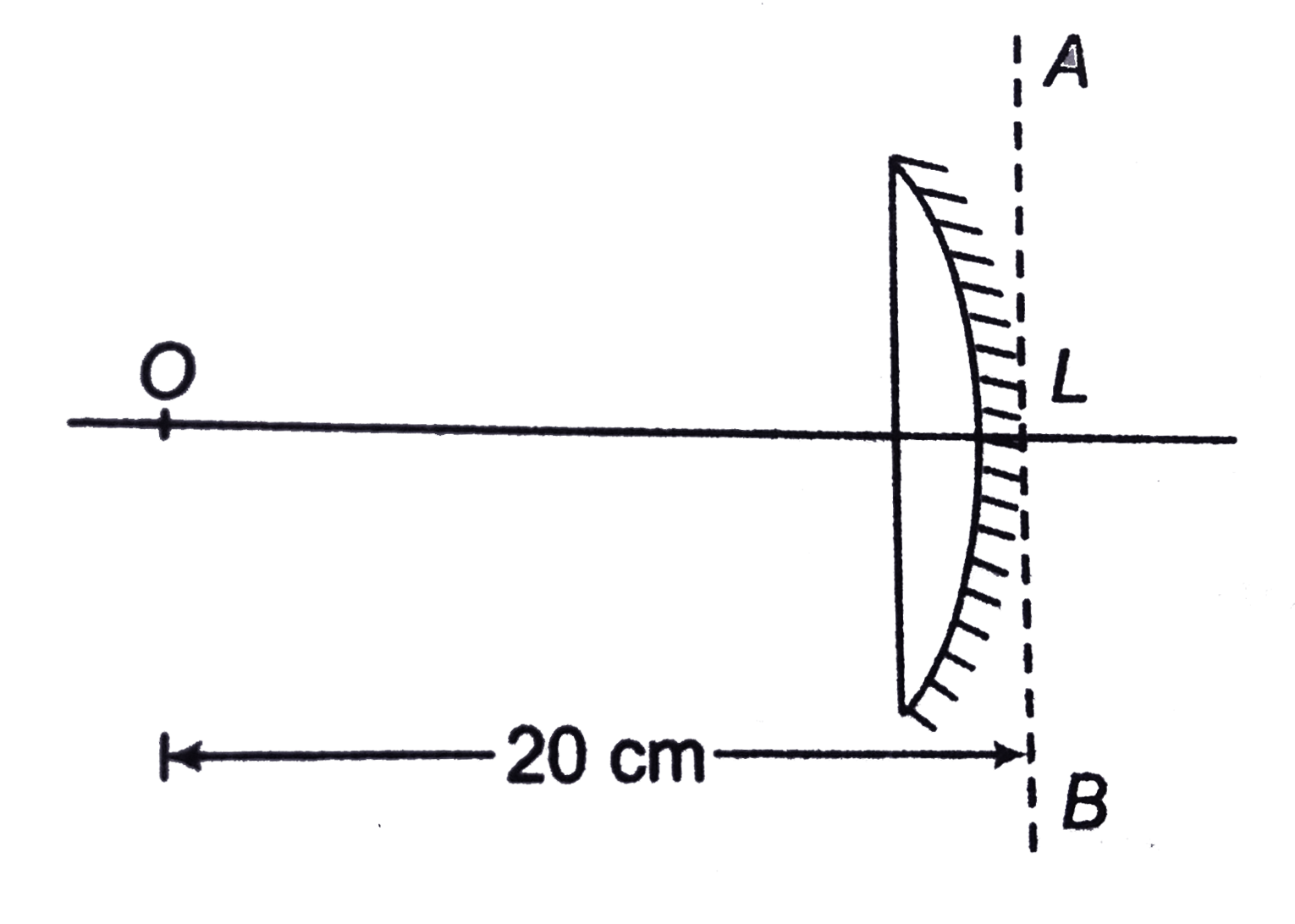An object is placed at a distance of 80 cm from a screen. Where should a convex lens of focal length 15 cm be placed from object such that a real image of object is formed?
60 cm
20 cm
40 cm
Both (1) and (2)
To solve the problem step by step, we will use the lens formula and the given information about the object, screen, and the convex lens.
1. Understanding the Setup:
- Let the distance from the object to the lens be x cm.
- Therefore, the distance from the lens to the screen will be 80−x cm, since the total distance between the object and the screen is 80 cm.
2. Lens Formula:
- The lens formula is given by:
1f=1v−1u
- Where:
- f is the focal length of the lens (15 cm).
- u is the object distance (which will be negative in our sign convention).
- v is the image distance.
3. Substituting Values:
- From our setup:
- u=−x (object distance is negative)
- v=80−x (image distance is positive)
- Now substituting these into the lens formula:
115=180−x−1−x
- This simplifies to:
115=180−x+1x
4. Finding a Common Denominator:
- The common denominator for the right side is x(80−x):
115=(80−x)+xx(80−x)
- This simplifies to:
115=80x(80−x)
5. Cross Multiplying:
- Cross-multiplying gives:
80=115x(80−x)
- Multiplying both sides by 15:
1200=x(80−x)
6. Rearranging the Equation:
- Rearranging gives us a quadratic equation:
x2−80x+1200=0
7. Solving the Quadratic Equation:
- We can use the quadratic formula x=−b±√b2−4ac2a:
- Here a=1,b=−80,c=1200.
- Calculate the discriminant:
D=(−80)2−4⋅1⋅1200=6400−4800=1600
- Now substituting into the quadratic formula:
x=80±√16002=80±402
- This gives us:
x=1202=60andx=402=20
8. Conclusion:
- The lens can be placed either 20 cm or 60 cm from the object to form a real image on the screen.
Final Answer:
The convex lens should be placed either 20 cm or 60 cm from the object.
- Let the distance from the object to the lens be x cm.
- Therefore, the distance from the lens to the screen will be 80−x cm, since the total distance between the object and the screen is 80 cm.
- The lens formula is given by:
1f=1v−1u
- Where:
- f is the focal length of the lens (15 cm).
- u is the object distance (which will be negative in our sign convention).
- v is the image distance.
- From our setup:
- u=−x (object distance is negative)
- v=80−x (image distance is positive)
- Now substituting these into the lens formula:
115=180−x−1−x
- This simplifies to:
115=180−x+1x
- The common denominator for the right side is x(80−x):
115=(80−x)+xx(80−x)
- This simplifies to:
115=80x(80−x)
- Cross-multiplying gives:
80=115x(80−x)
- Multiplying both sides by 15:
1200=x(80−x)
- Rearranging gives us a quadratic equation:
x2−80x+1200=0
- We can use the quadratic formula x=−b±√b2−4ac2a:
- Here a=1,b=−80,c=1200.
- Calculate the discriminant:
D=(−80)2−4⋅1⋅1200=6400−4800=1600
- Now substituting into the quadratic formula:
x=80±√16002=80±402
- This gives us:
x=1202=60andx=402=20
- The lens can be placed either 20 cm or 60 cm from the object to form a real image on the screen.
The convex lens should be placed either 20 cm or 60 cm from the object.
Topper's Solved these Questions
- TEST 1BOOK - AAKASH INSTITUTE ENGLISHCHAPTER - TEST 1EXERCISE - EXERCISE
21 Videos
- SYSTEM OF PARTICLES AND ROTATIONAL MOTIONBOOK - AAKASH INSTITUTE ENGLISHCHAPTER - SYSTEM OF PARTICLES AND ROTATIONAL MOTIONEXERCISE - Try Yourself
63 Videos
- TEST 2BOOK - AAKASH INSTITUTE ENGLISHCHAPTER - TEST 2EXERCISE - Exercise
308 Videos
Similar Questions
An object is placed at a distance of 80 cm from a screen. Where should a convex lens of focal length of 15 cm will be placed so as to obtain a real image of an object?
View SolutionAn object is placed at a distance of 12 cm from a convex lens of focal length 8 cm. Find :
nature of the image
View SolutionAn object is placed at a distance of 12 cm from a convex lens of focal length 8 cm. Find :
the position of the image
View SolutionAn object is placed at a distance 20 cm from the pole of a convex mirror of focal length 20 cm. The image is produced at
View SolutionA point object is placed at distance of 30 cm in front of a convex mirror of Focal length 30 cm. The image will form at
View SolutionAn object is placed at a distance 24 cm in front of a convex lens of focal length 8 cm.
Calculate the distance of the image from the lens.
View SolutionA point object is placed at a distance of 20cm from a thin plano-convex lens of focal length 15cm(μ=1.5). The curved surface is silvered. The image will form at

View SolutionA point object is placed at a distance of 20cm from a thin plano-convex lens of focal length 15cm(μ=1.5). The curved surface is silvered. The image will form at

View SolutionAn object is placed at a distance of 30 cm in front of a convex mirror of focal length 15 cm. Write four characteristics of the image formed by the mirror.
View SolutionA luminous object and a screen are at a fixed distance D apart. A converging lens of focal length f is placed between the object and screen. A real image of the object in formed on the screen for two lens positins if they are separated by a distance d equal to
View Solution
